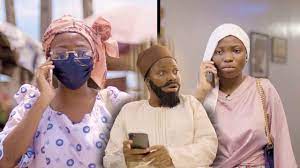In literature, words have the remarkable ability to paint vivid pictures, evoke intense emotions, and transport readers to different worlds. One of the most powerful aspects of descriptive writing is its capacity to convey the subtle nuances of human interactions, particularly when it comes to how to describe looking at someone in writing.
From fleeting glances to intense stares, the way a character gazes at another can reveal volumes about their feelings, intentions, and the dynamics between them. Thus, this blog post will reveal the art of how to describe looking at someone in writing and explore various ways to bring this fundamental human connection to life on the page.
The Enigmatic Glance
A. The Sideways Glance: Imagine a scene in which two people are in a crowded room. Their eyes meet for just a fraction of a second before one of them quickly looks away, a small smile tugging at the corner of their lips.
This subtle exchange speaks volumes, revealing a shy or secret admiration that words alone cannot convey. The sideways glance is like a hidden treasure, a stolen moment of connection that leaves the characters and readers yearning for more.
B. The Double Take: In another scenario, a character might witness something so unexpected or extraordinary that their eyes widen in surprise. They look once, and then, unable to believe their eyes, they look again – a double take that perfectly captures their astonishment and intrigue.
The writer can vividly describe the lingering of their gaze, the way their eyes seem unable to break free from the source of their fascination. This description creates a relatable experience for readers who have also been captivated by something unexpected. Describing the lingering gaze is one of the ways of how to describe someone in writing.
Intimate Connections
A. The Tender Gaze: Imagine a couple sitting across from each other at a candlelit dinner. As they talk, their eyes lock in a tender gaze, communicating more than words ever could.
The writer can delve into the emotions behind this gaze – the warmth, the affection, the unspoken bond that draws them closer. By describing the tenderness in their eyes, the writer allows readers to feel the connection between the characters on a deeper level, a way of how to describe looking at someone in writing.
B. The Soulful Stare: In a more intense scenario, a character might find themselves gazing into the eyes of someone they love, their gaze digging deeper, searching for the depths of their soul. This soulful stare reflects the character’s desire to understand and connect on a profound level, leaving readers empathizing with their longing and vulnerability.
Thus, the writer’s choice of words can evoke the intensity of this moment, making it resonate with readers who have experienced similar connections.
Expressing Emotions
A. The Furious Stare: When anger, frustration, or defiance fills the air, a character’s gaze might turn into a furious stare. The writer can describe the narrowed eyes, the tense jaw, and the burning intensity that emanates from their gaze. This vivid portrayal creates a sense of tension and unease, allowing readers to feel the heated emotions coursing through the scene.
B. The Teary-Eyed Look: Describing the act of looking at someone through tear-filled eyes can be particularly poignant. When a character is on the brink of tears, their gaze takes on a vulnerable quality, conveying raw emotions and heartbreak.
By carefully crafting the description of the teary-eyed look, the writer invites readers to empathize with the character’s pain and sorrow.
Moments of Intrigue
A. The Analytical Glare: In moments of curiosity or scrutiny, a character might fixate their gaze on another, analyzing their actions, words, or intentions. The analytical glare can be depicted through the furrowing of brows, the narrowing of eyes, and the sense of intense focus.
This description adds depth to the character’s motivations and thought processes, engaging readers in the act of deciphering the character’s perspective.
B. The Mysterious Stare: For characters shrouded in mystery or allure, the writer can employ the mysterious stare. The gaze becomes enigmatic, leaving readers curious about the thoughts and intentions hidden behind the character’s eyes.
By using evocative language, the writer can convey the sense of intrigue that surrounds the character, encouraging readers to unravel the secrets they hold.
The Playful Exchange
A. The Flirtatious Wink: In flirtatious encounters, a character might punctuate their conversation with a wink, adding a touch of charm and playfulness. Describing the wink allows the writer to convey the character’s confidence and the shared sense of intrigue between them and their target. This description adds a layer of light-heartedness to the scene, leaving readers with a smile.
B. The Laughter-Filled Look: Picture a group of friends sharing a hearty laugh. Their eyes crinkle at the corners, and their gaze is filled with genuine mirth. By describing the laughter-filled look, the writer captures the camaraderie and joy in the moment, allowing readers to connect with the characters’ bond and share in their happiness.
Contextual Settings:
A. The Moonlit Stroll: Imagine a moonlit night where two characters take a leisurely stroll. Their gaze meets beneath the silver glow of the moon, adding a touch of romance to the scene. The writer can incorporate the setting to enhance the atmosphere, describing how the moonlight casts shadows and highlights on their faces, amplifying the emotions of the moment.
B. The Cafe Connection: In a bustling cafe, a chance meeting unfolds between two characters. The writer can describe the setting – the aroma of the coffee, the soft hum of conversations – and then focus on the character’s eyes as they lock onto each other. By incorporating the surroundings, the writer creates a multi-sensory experience that immerses readers in the scene.
50 words that can describe ‘how to describe looking at someone in writing.”
- Gazing
- Peering
- Glancing
- Staring
- Observing
- Scrutinizing
- Surveying
- Eyeing
- Fixating
- Appraising
- Surveying
- Scrutinizing
- Witnessing
- Beholding
- Regarding
- Examining
- Scanning
- Perceiving
- Admiring
- Noticing
- Watching
- Locking eyes
- Casting a look
- Glimpsing
- Spotting
- Sizing up
- Sighting
- Taking in
- Eyeing up
- Absorbing
- Viewing
- Oglings
- Stalking
- Checking out
- Sussing out
- Taking a gander
- Piercing
- Darting a look
- Meeting eyes
- Feasting one’s eyes
- Searching
- Piercing gaze
- Glinting eyes
- Sending a glance
- Giving the once-over
- Ocular encounter
- Discerning
- Perusing
- Scoping out
- Fixated stare
Conclusion
Describing how to look at someone in writing is a nuanced and powerful tool in a writer’s arsenal. Through a variety of descriptions, from enigmatic glances to playful exchanges, writers can convey emotions, relationships, and atmosphere in profound ways. By carefully choosing words that evoke the desired emotions and using the surrounding context to enrich the scene, writers can create memorable moments that resonate with readers on a personal level.
As writers, let us continue to explore and experiment with different ways of describing this fundamental human connection, bringing our characters and their interactions to life on the page.











